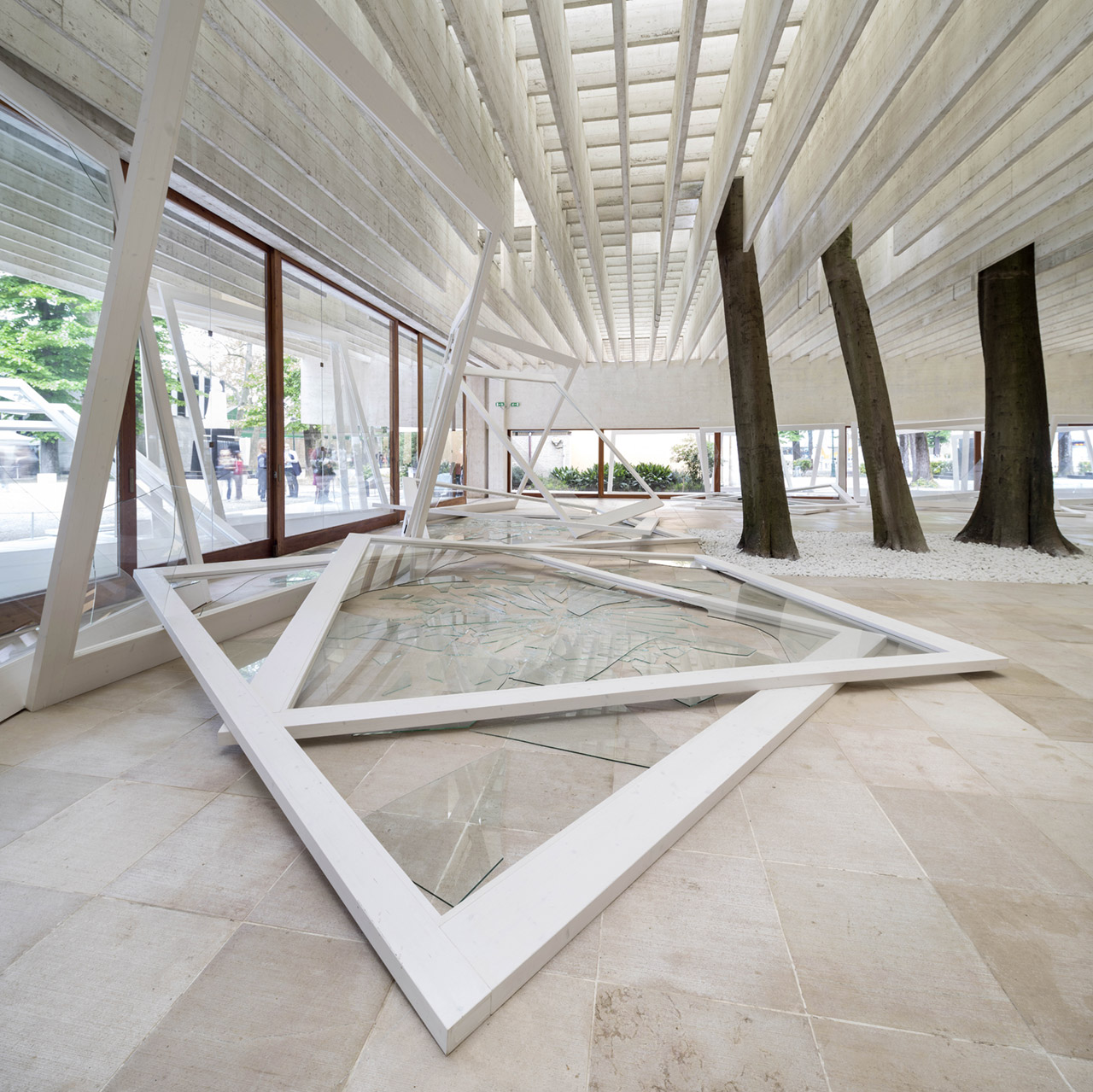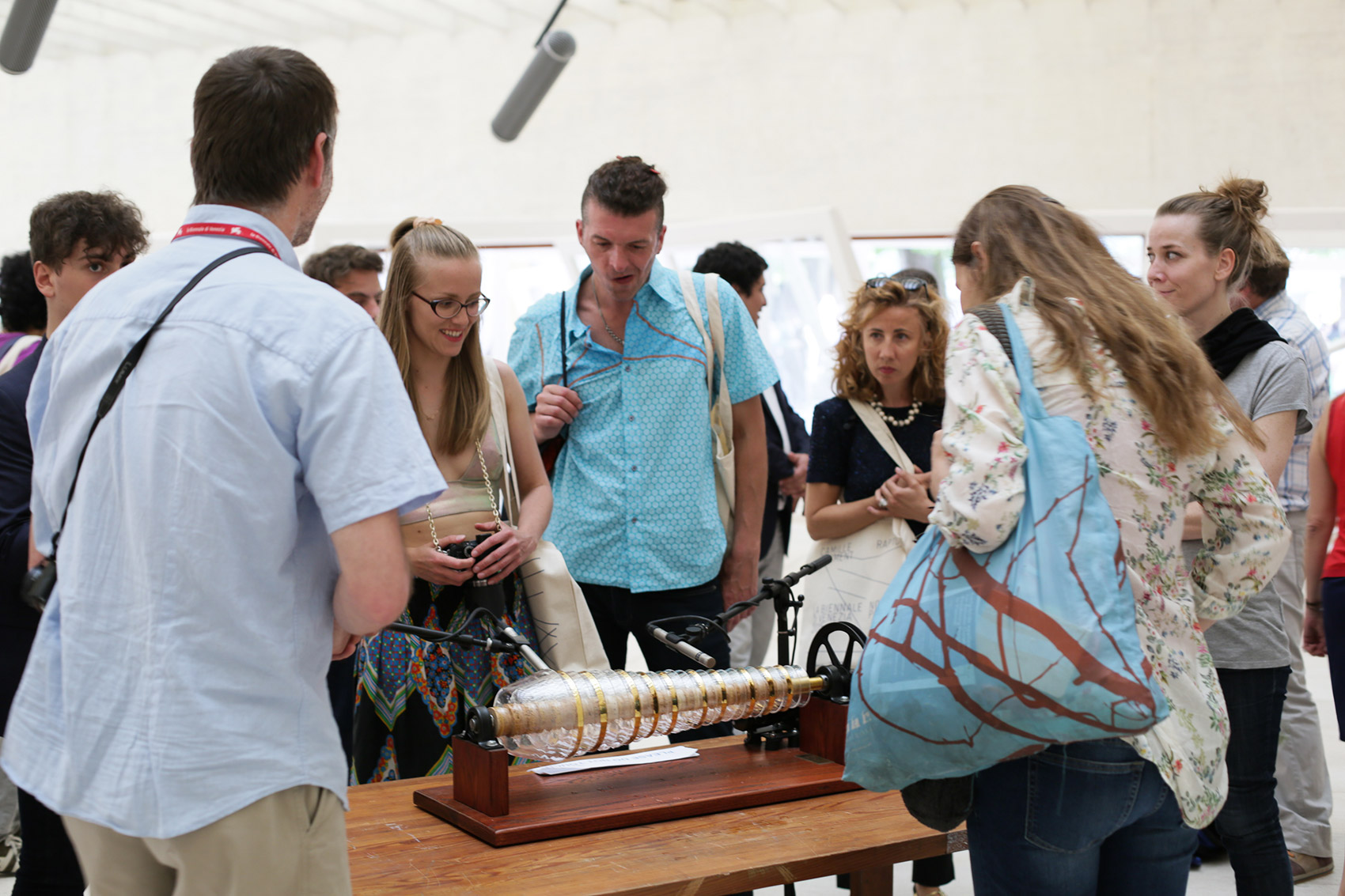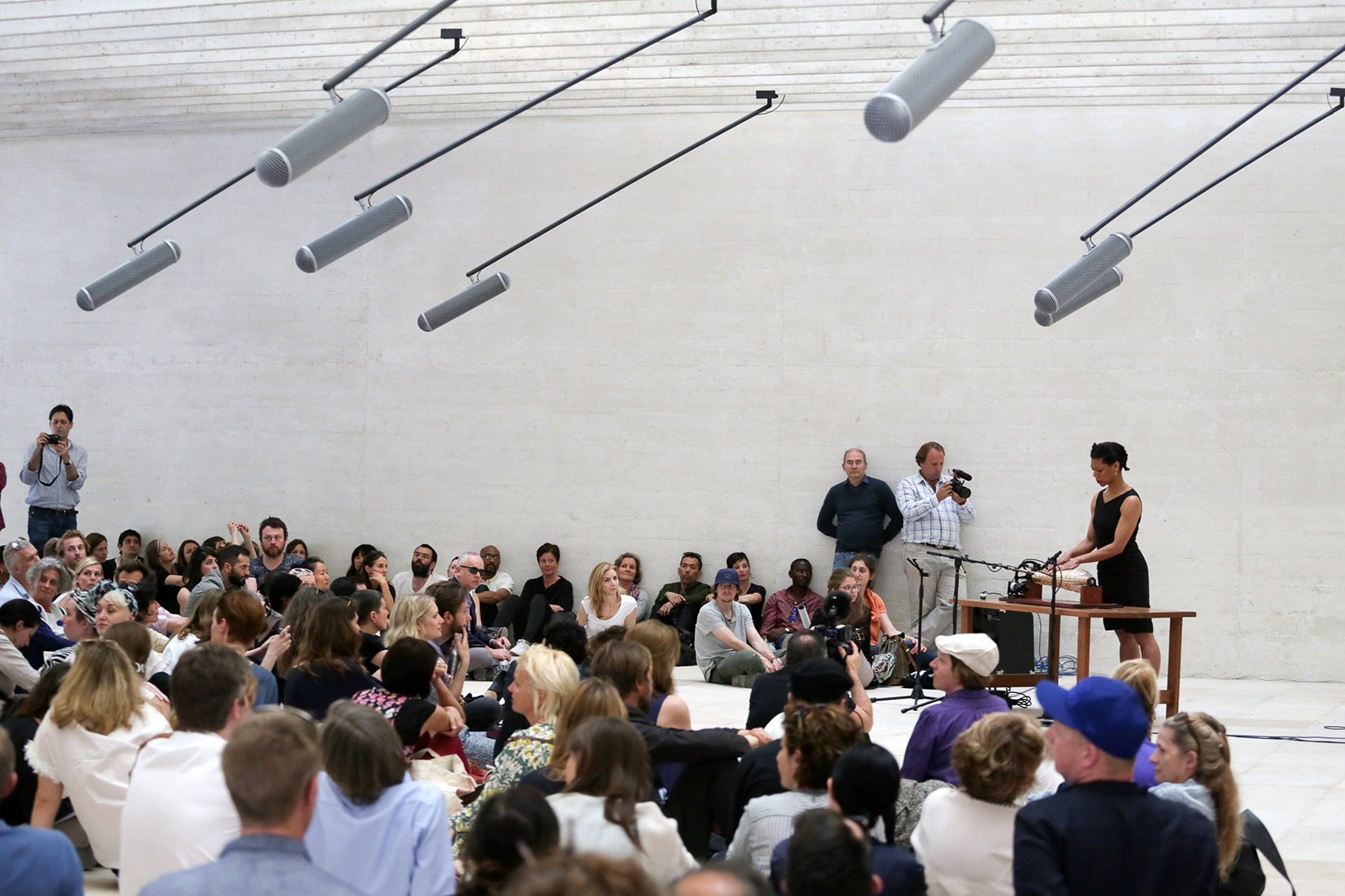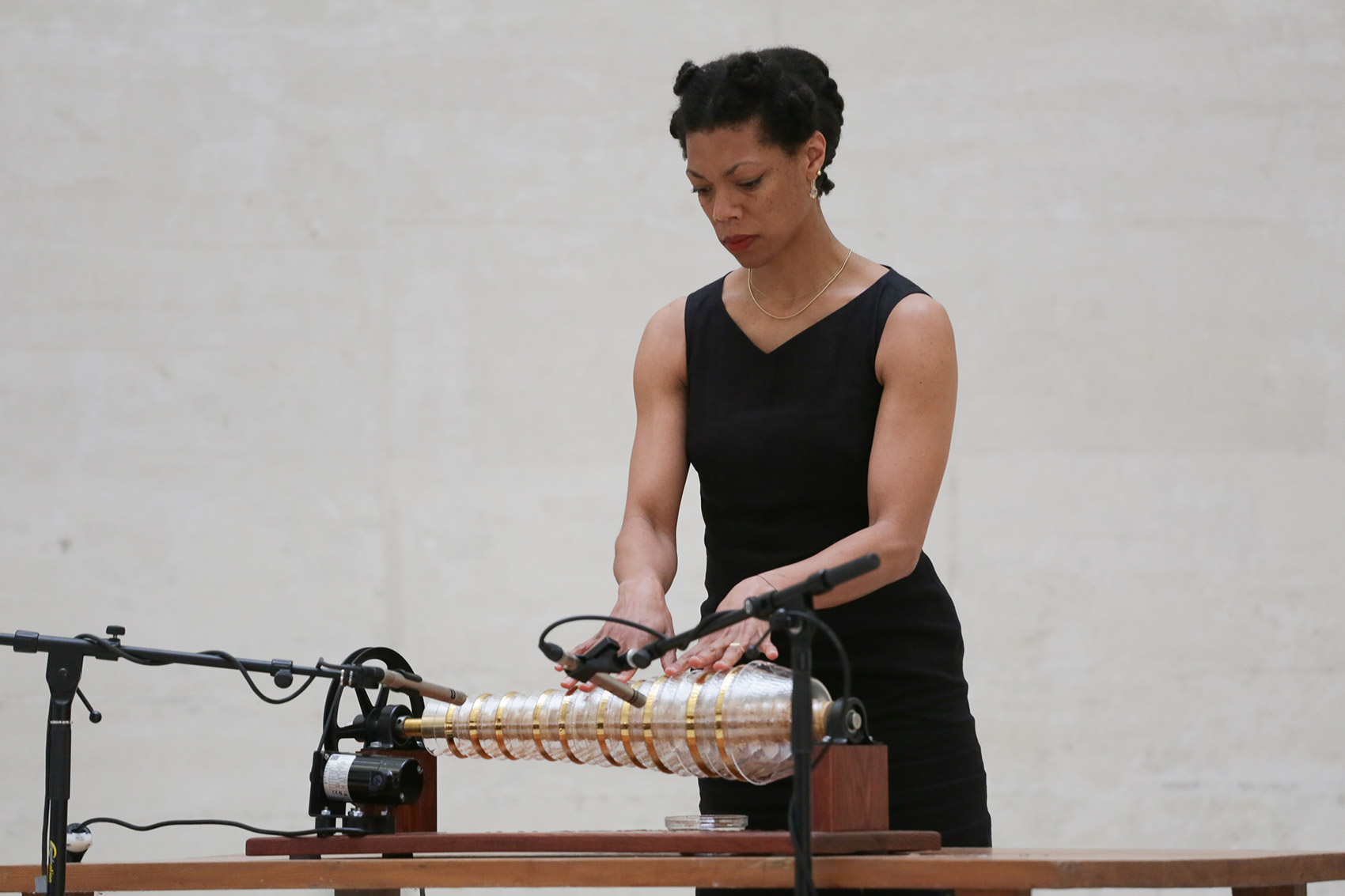Camille Norment – Rapture

Multimedia installation, concert and performance
The Nordic Pavilion at the Venice Biennale in 2015 was in its entirety contained by Camille Norment’s site-specific sculptural sound installation “Rapture”. The rig consisted of 16 audio sources, 8 suspended speakers and 8 electrodynamical exciters mounted on large window glass. Part of the work was Norment compositions for glass harmonica. This acoustic 1800s instrument creates a pure undertone that occurs when playing with your fingers on a damp rotating glass shape, and the installation “Rapture” also developed the thematics of sound through glass further.
Notam’s role was to develop technology for the transmission of sound. We also designed the rig and setup with audio routing to 16 audio sources so the room in addition to the regular work could be used for concerts and performances during the Biennale, and along the way we responded to the artists technical needs.
Koka Nikoladze and Hans Wilmers developed software and a mechanical method for optimizing the glass plate resonance. Behind the finished products was a research process that involved many different glass plates and recording of impulse responses. With the software as a tool they could simulate plates of glass during Camille Norment’s audio production at Notam. The solution for optimizing glass plate resonance consisted of frames that held plates up from the corners. In this manner, exciters mounted on the glass surfaces did not prevent resonance and loud sound from the plates. In addition, they selected, ordered and rigged equipment.




